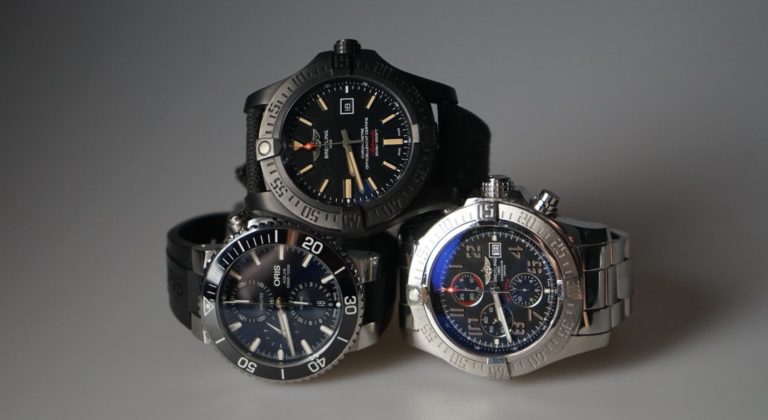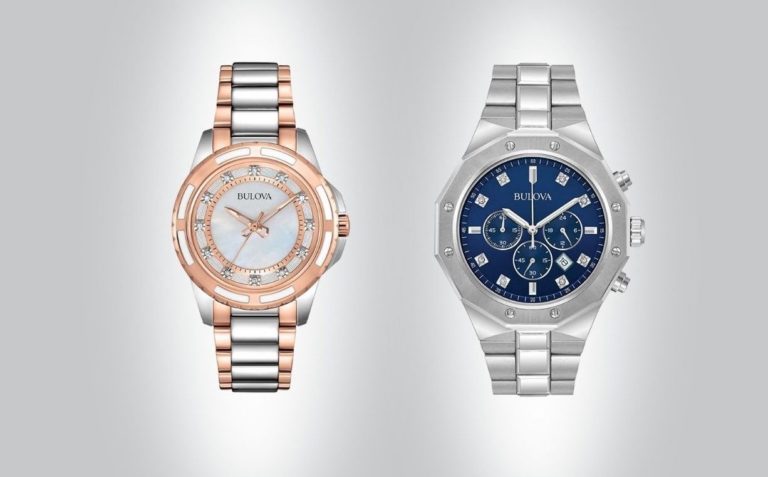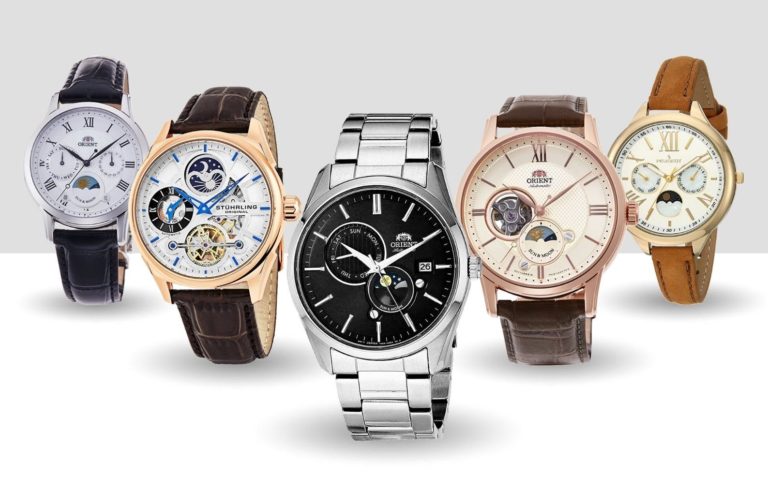Affiliate Disclosure: As an Amazon Associate I earn from qualifying purchases. Details
“Why do watches have jewels?” This is a question that many discovering the world of watches have asked themselves.
In this blog post, we will explain everything you need to know about these unusual watch parts. We will cover why they are used and what kinds of jewels are found in watches.
By the end of this post, you will have a clear understanding of everything related to watch jewels!
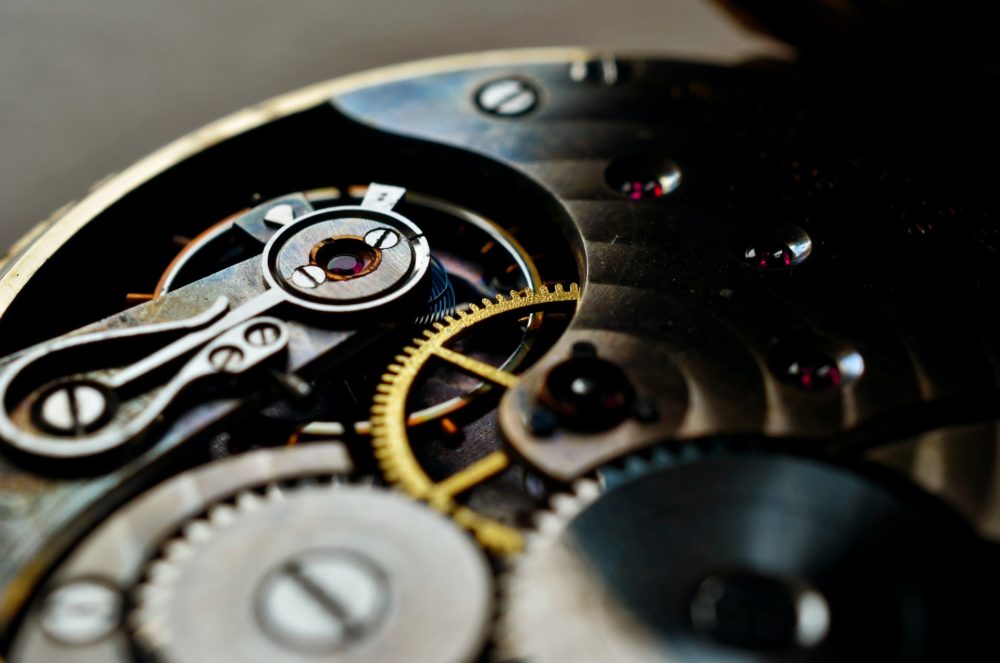
So, What Are Jewels in a Watch?
In layman’s terms, watch jewels are gemstones set into critical places in the mechanical movement to improve the performance and accuracy of the caliber.
The jewels are typically made of rubies or sapphires, and their primary purpose is to reduce friction between moving parts. This helps to ensure that the watch movement runs smoothly, keeps accurate time, and doesn’t wear off too quickly.
The number of jewels in a mechanical watch caliber can vary, but it is typically between 17 and 25, which covers all the critical friction-intense movements between the parts.
Read more: How do mechanical and automatic watches work?
Are The Jewels Real?
There were times when watchmakers employed real diamonds, rubies, sapphires, and garnets in watch movements. However, with the invention of manufacturing synthetic gemstones in 1902, the watch industry quickly changed its practices as synthetically produced jewels were much cheaper than the real ones.
Therefore, the jewels found in watches are not real gemstones but synthetically produced versions. However, the physical and chemical qualities are the same as with real ones.
These days, the most widely used synthetic gemstone is ruby, followed by sapphire. Since both of them come from the same mineral, corundum, there’s no difference between the two, apart from the coloring.
Other gemstones found in the movements, though rare, are diamonds, emeralds, and amethysts.
Do More Jewels Mean a Better Watch?
As already mentioned earlier, a typical mechanical caliber consists of 17-25 jewels. The higher the number of jewels, the more prominently it is typically advertised.
But does it also mean the more jewels the watch has, the better it eventually is?
Not really.
Watch jewels are located at particular places where the friction between the moving parts occurs. Therefore, for a simple caliber, the number of places where jewels make sense is limited, and any excess won’t make much difference.
However, when the caliber comes with extra complications, such as the date function and chronograph, the number of watch jewels increases due to the additional moving parts.
Hence, the more complications the caliber has, the more jewels it typically employs.
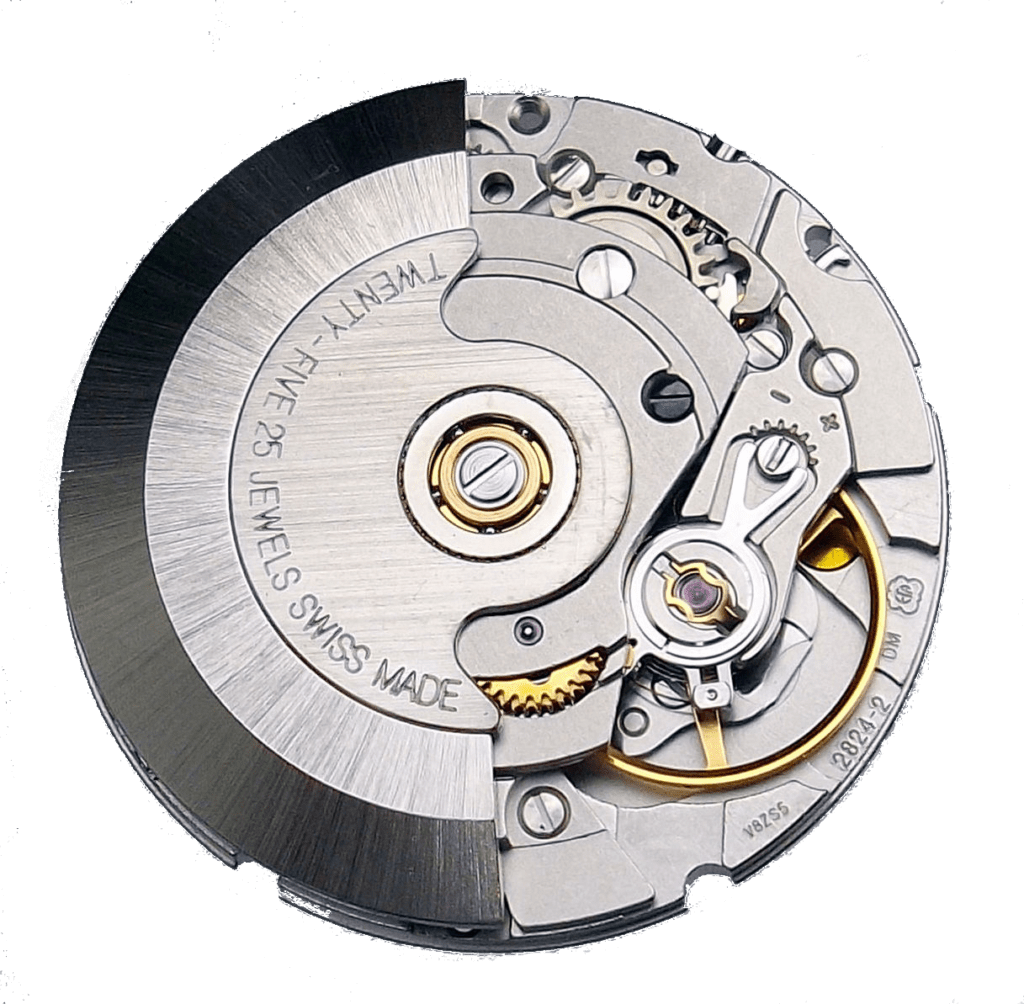
While having more jewels does not necessarily make a watch better, it does indicate that the manufacturer has put a lot of thought and effort into creating a finely-tuned movement.
However, the story hasn’t been quite like that the whole time.
Back in the day, watch manufacturers tried to convince people to buy their products by marketing timepieces with many jewels. It even went so far that some timepieces consisted of a hundred or more gemstones in unnecessary places that didn’t contribute to the accuracy and longevity of a watch not one bit.
However, the industry intervened in 1974 by implementing the ISO 1112 standard that defined the functional and non-functional jewels in a movement and how they should be used in advertising. The introduction of the standard eventually eliminated this unethical marketing practice.
What Does 17-Jewels Mean?
A 17-jewel watch is considered a “fully jeweled watch.” It means that all the essential parts where the friction occurs are fitted with jewel bearings. 17-jewels is considered the minimum number of gemstones that a quality manually wound mechanical caliber should consist of.
The 17-jewel movements are mostly simple vintage calibers and not that widespread nowadays.
What Does 21-Jewels Mean?
If you’re searching for automatic watches, the most widespread number of watch jewels you’ll come across is 21. It is also the minimum amount of jewels a functioning self-winding caliber should have.
Like with 17-jewels, the watch is fitted with gemstones in all the critical friction-intense parts. However, the additional four jewels are added to the caliber for reducing positional errors.
Several watch manufacturers also employ 23-jewel, 24-jewel, and 25-jewel automtic calibers. However, the higher number of jewels doesn’t mean the watch is better than the 21-jewel timepiece. The reason for including extra gemstones is to do with the different structures of the movements.
Do Quartz Watches Have Jewels?
Since watch jewels are almost entirely under the spotlight in mechanical watches where they hold significant importance, not many know that the gemstones can also be found in quartz watches.
Depending on the construction of the quartz movement, the number of watch jewels varies from 0 to 10.
A quartz caliber consists of fewer parts compared to its mechanical counterpart. In addition, the parts are mostly stationary where there’s no friction between them. Therefore, many quartz calibers come with no watch jewels.
However, since there’s still a mechanical movement in quartz watches through watch hands, many quartz calibers feature at least one gemstone to eliminate friction. In addition, if the caliber adds extra features, such as the chronograph and GMT time, the number of jewels rises.
Therefore, the purpose of watch jewels in a quartz watch is to prolong the lifetime of the mechanism rather than provide better accuracy.
So, Why Do Watches Have Jewels?
I hope this blog post has answered all the essential questions about watch jewels!
The main takeaway from this post is that the watches employ jewels to improve accuracy and performance by reducing friction between the moving parts. The jewels aren’t real gemstones but synthetically produced alternatives that offer the same characteristics as the real ones do.
Also, the higher number of jewels doesn’t necessarily mean the watch is better because of that.
You may also like:
Affiliate Disclosure: As an Amazon Associate I earn from qualifying purchases. Details
- CIGA Design Blue Planet Gilding Watch: The Best Conversation Starter Around? - April 2, 2023
- CIGA Design X-Series Review: The Most Skeleton for the Money? - July 7, 2022
- What Is A Dive Watch? A Complete Guide - May 17, 2022

